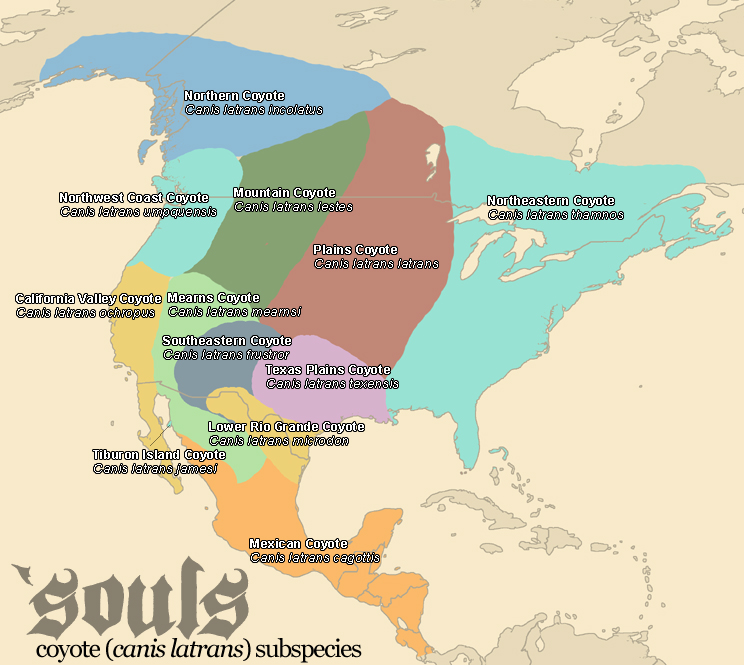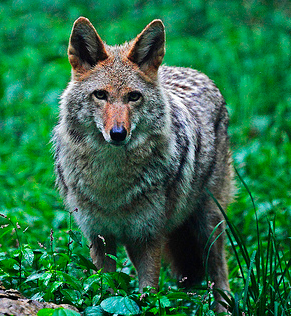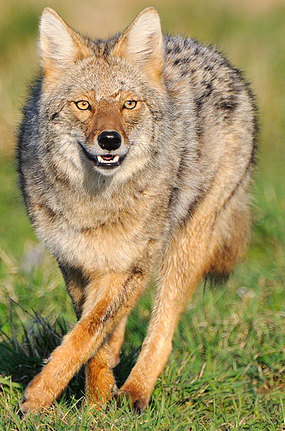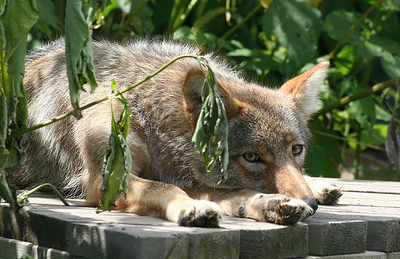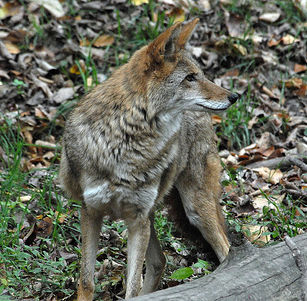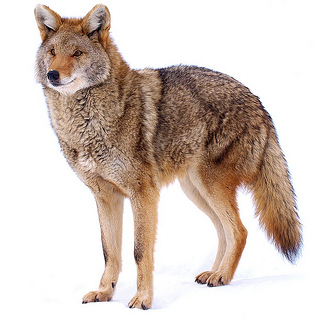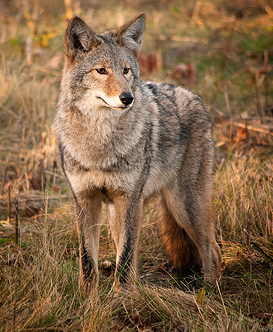Northeastern Coyote (''Canis latrans thamnos'')
See our RP Guide for more extensive information regarding coyotes.
On this page... (hide)
- 1. Common Names
- 2. 'Souls Range
- 3. Appearance
- 4. Other Characteristics
- 4.1 Social Life & Diet
- 4.2 Survival
- 4.3 Luperci
- 5. More Images
- 6. Citations
1. Common Names
Northeastern Coyote
2. 'Souls Range
North-central Saskatchewan east to southern Ontario south to northern Indiana and west to Missouri.
3. Appearance
This coyote subspecies tends to be larger, with bigger teeth and slightly different dentition than most other coyotes; theories have proposed this subspecies is highly hybridized, leading to their more wolfish appearance. Northeastern Coyotes tend to have thicker fur than many other subspecies, and some tend to have an almost wolfish appearance; individuals with as much as 89% wolf were identified in some regions. The Northeastern Coyote tends to have larger teeth than many other subspecies.
Canis latrans thamnos, from tryburn@Flickr
This coyote subspecies enjoys a wider variation of color than its close cousins; coyotes of the thamnos subspecies occur in a wide variety of colors, encompassing almost the entire white-to-black range of the Common Gray Wolf. Black, white, and other solid colors are rare; these coyotes are more likely to carry a wolfish coloration, preferring dusky browns and warm grays to reds, golds, or other tawny coyote colors.
4. Other Characteristics
4.1 Social Life & Diet
The Northeastern Coyote is a social animal, preferring packs to solitary or paired lifestyles as compared to other coyotes. They enjoy a more stabilized pack structure, though they do compete heavily with various wolf subspecies. The Northeastern Coyote tends to pursue larger prey than many other coyotes. Deer are definitely on the menu for these guys even in pairs and threes, whereas other, smaller subspecies prefer smaller prey.
4.2 Survival
These coyotes had expanded their territory quite a bit from their original range, aided by the lack of canine competition (i.e., wolves) by 1988. Not only that, but they had also absorbed remnant wolf populations. These coyotes experienced a decrease in numbers and range upon the reappearance of their larger cousin species, as with most coyotes; however, one could not liken them to being in any danger, as their numbers have swelled considerably.
4.3 Luperci
Many of these coyotes are Luperci, and some of them even have humanized lifestyles. The level of humanization of the Northeastern Coyote can be likened to 'Souls; while there are some individuals who prefer to live in houses and wear clothing, there are just as many who still roam on four-legs. These coyotes occupy a vast range, and so their lifestyles are quite varied, considering the area. To the East and all along the Gulf coast, various port towns and small cities have begun to crop up; in the west, these coyotes are largely feral.
5. More Images
6. Citations

